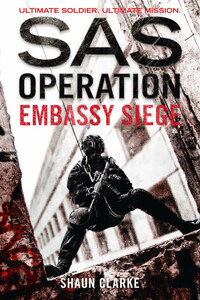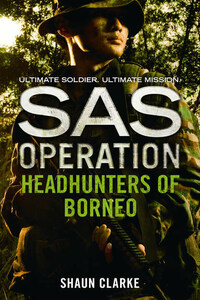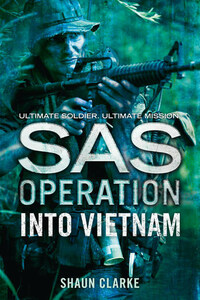Published by HarperCollinsPublishers Ltd
1 London Bridge Street
London SE1 9GF
www.harpercollins.co.uk
First published in Great Britain by 22 Books/Bloomsbury Publishing plc 1994
Copyright © Bloomsbury Publishing plc 1994
Cover layout design © HarperCollinsPublishers Ltd 2015
Cover photographs © Oleg Zabielin/Alamy (soldier); Shutterstock.com (textures)
Shaun Clarke asserts the moral right to be identified as the author of this work.
A catalogue copy of this book is available from the British Library.
This novel is entirely a work of fiction. The names, characters and incidents portrayed in it are the work of the authorâs imagination. Any resemblance to actual persons, living or dead, events or localities is entirely coincidental.
All rights reserved under International and Pan-American Copyright Conventions. By payment of the required fees, you have been granted the non-exclusive, non-transferable right to access and read the text of this e-book on screen. No part of this text may be reproduced, transmitted, down-loaded, decompiled, reverse engineered, or stored in or introduced into any information storage and retrieval system, in any form or by any means, whether electronic or mechanical, now known or hereinafter invented, without the express written permission of HarperCollins.
Source ISBN: 9780008155124
Ebook Edition © December 2015 ISBN: 9780008155131
Version: 2015-11-02
Number 16 Princes Gate formed part of a mid-Victorian terrace overlooking Hyde Park and had been used as the Iranian Embassy in London for more than a decade. Until 1979, it had represented the Iran ruled by Shah Reza Pahlavi and his wife, the Empress Fara Diba.
Noted for its Italianate stucco façade and prominent frieze, it was a very large building spread over three main floors and an attic. The ground floor comprised an imposing entrance hall, a large, beautifully furnished reception room, toilets, an administration office, and an expansive library overlooking the rear terrace. The main stairs led up to the first floor and the rather grand ambassadorâs office, the more modest office of the chargé dâaffaires, two administration offices and a storage room. The second floor contained two more administration offices, Rooms 9, 9A and 10, another toilet and a telex room. The third floor was the busiest, containing the press counsellorâs office, the press room, the commercial office, the xerox room, the switchboard, Room 19, the kitchen, a toilet, and two more administration rooms, one of which was empty. A well skylight with a glass roof, located between Room 19, the switchboard, the xerox room and the outer wall, overlooked the main stairs connecting the three floors. As the lift terminated on the second floor, the third floor could only be reached by the stairs.
When run by the Shahâs young and eligible Ambassador, Parvis Radji, the Embassy had been noted for its lavish dinner parties and largesse when it came to supplying excellent caviar, French wines, cars, free hotels and first-class travel to British diplomats, journalists and other visitors whose goodwill and assistance were vital to Iran. However, while ostentatiously maintaining this front of gracious, civilized living, the Embassy had also been used as a base for SAVAK, the Shahâs dreaded secret police, whose function was to spy on and intimidate London-based Iranians, mostly students. Many of these secret police were uneducated, unsophisticated and addicted to the Western âdecadenceâ they were supposed to despise: nightclubs, alcohol and bought women.
Such activities had, however, ended with the downfall of the Shah in January 1979. Six months after the revolution, the Ayatollahs replaced Parvis Radji with a new chargé dâaffaires, Dr Ali Afrouz, a twenty-nine-year-old graduate in psychology and education. Once installed in the Embassy at Princes Gate, Ali weeded out the corrupt members of SAVAK, banned all alcohol from the premises, got rid of the more ostentatious luxuries of the previous regime, and in general ensured that Embassy business was conducted in a more modest, formal manner.
In the days of the Shah, the Embassyâs front door had been guarded by the British security company Securicor. Unfortunately, when Dr Afrouz took over, he dropped the company and gave the job to an Iranian, Abbas Fallahi, who had been the Embassyâs butler and knew precious little about security.
More knowledgeable in this area was Police Constable Trevor Lock, at that time a member of the Diplomatic Protection Group. This organization, being unable to give individual protection to each of Londonâs 138 embassies and High Commissions, was based at several strategic points in West London, remained constantly on alert in case of emergency, and also provided individual armed guards as part of the British Governmentâs token contribution to the embassiesâ security.














